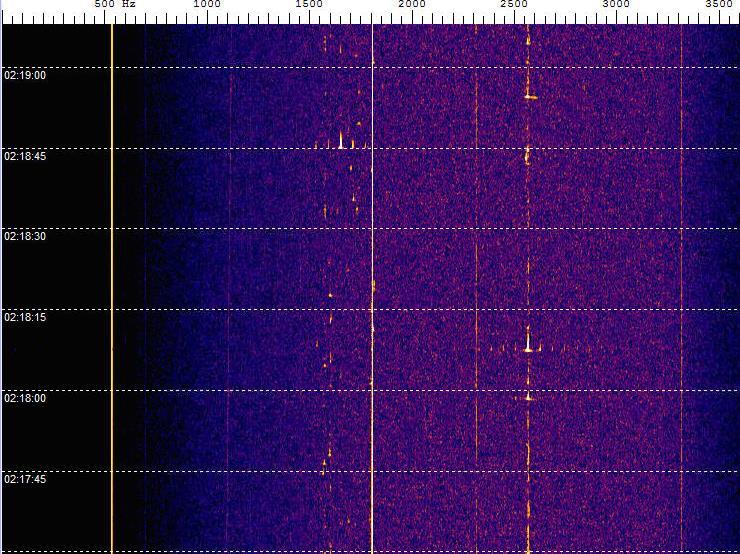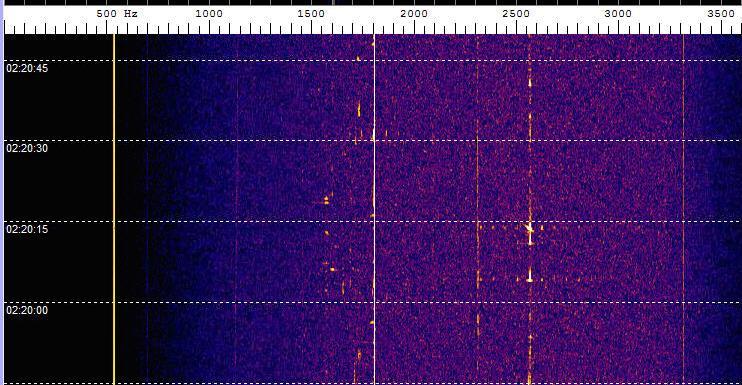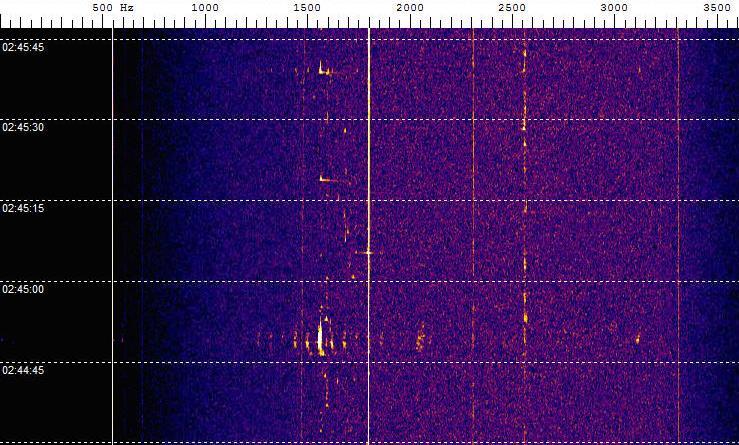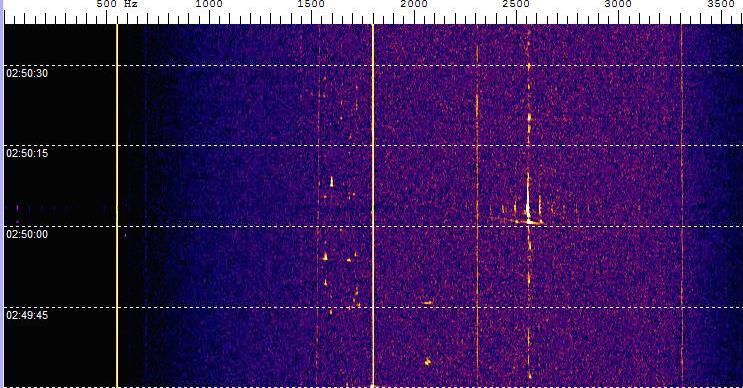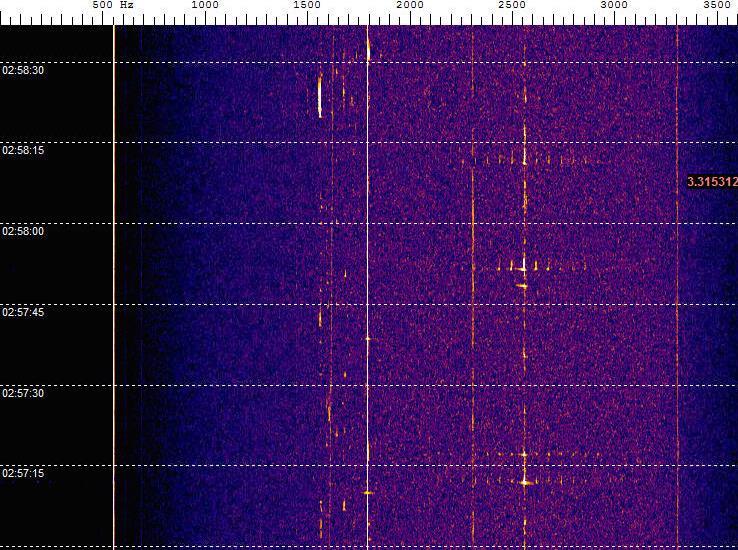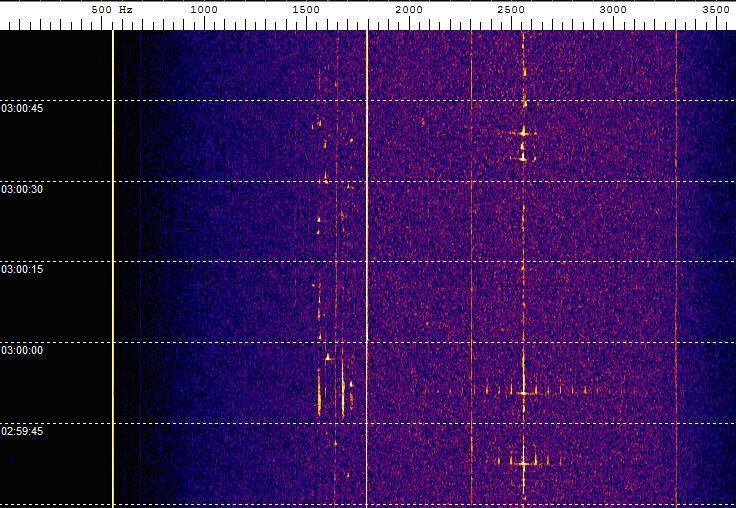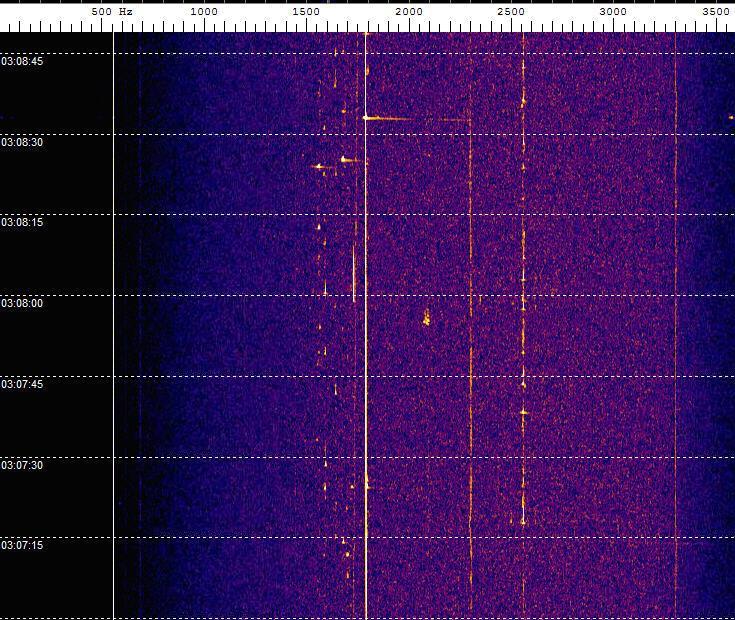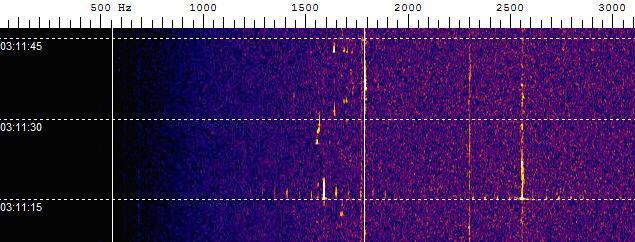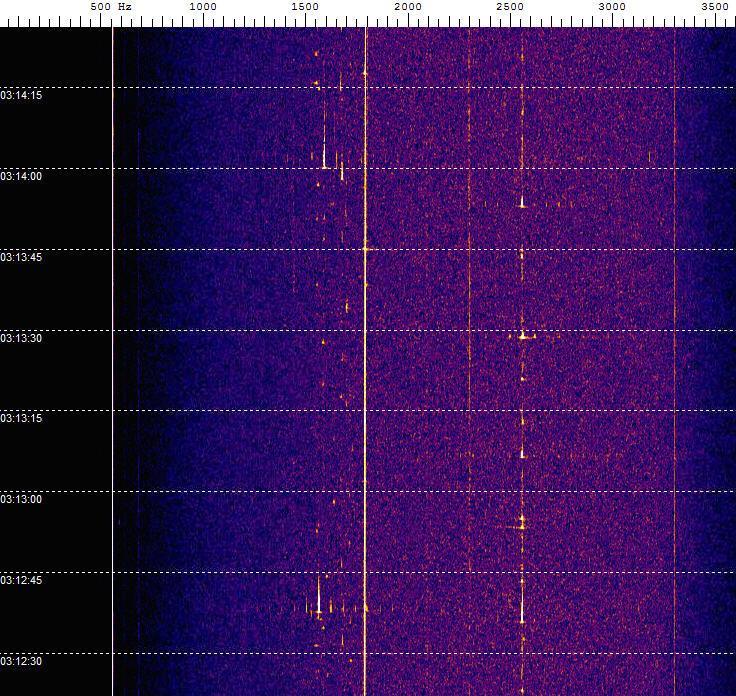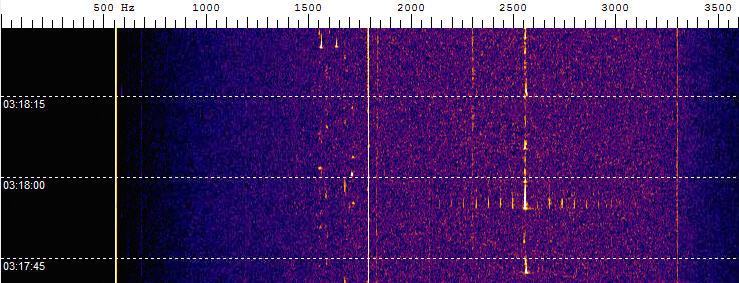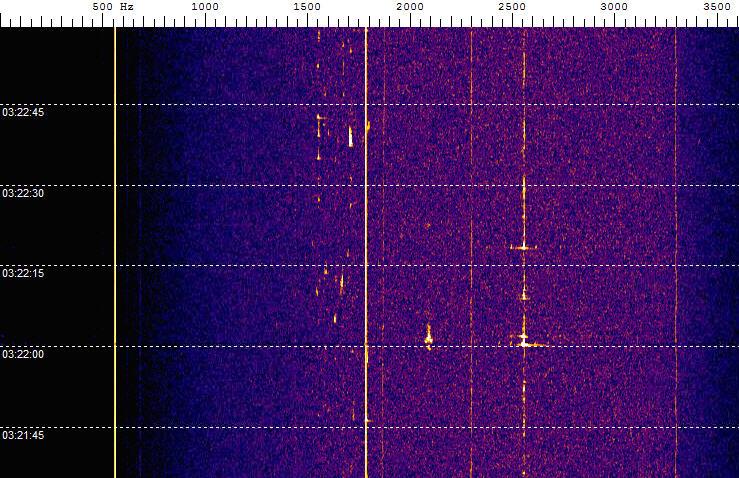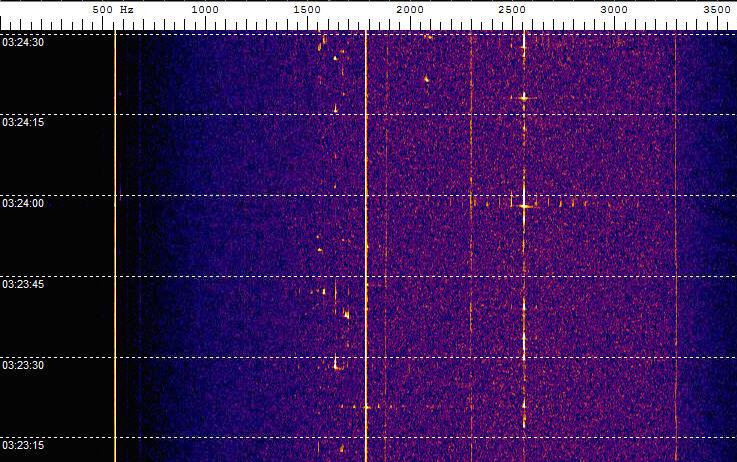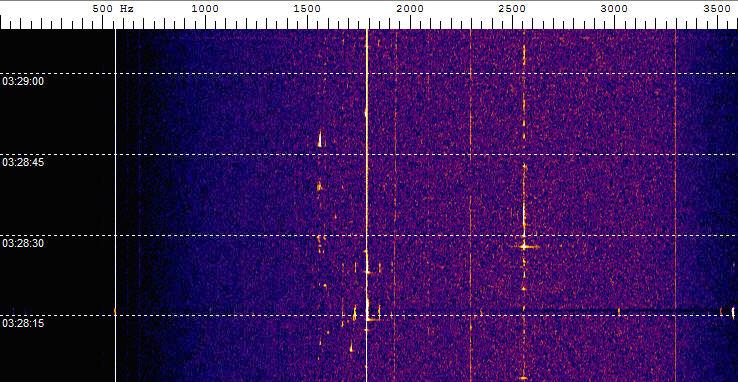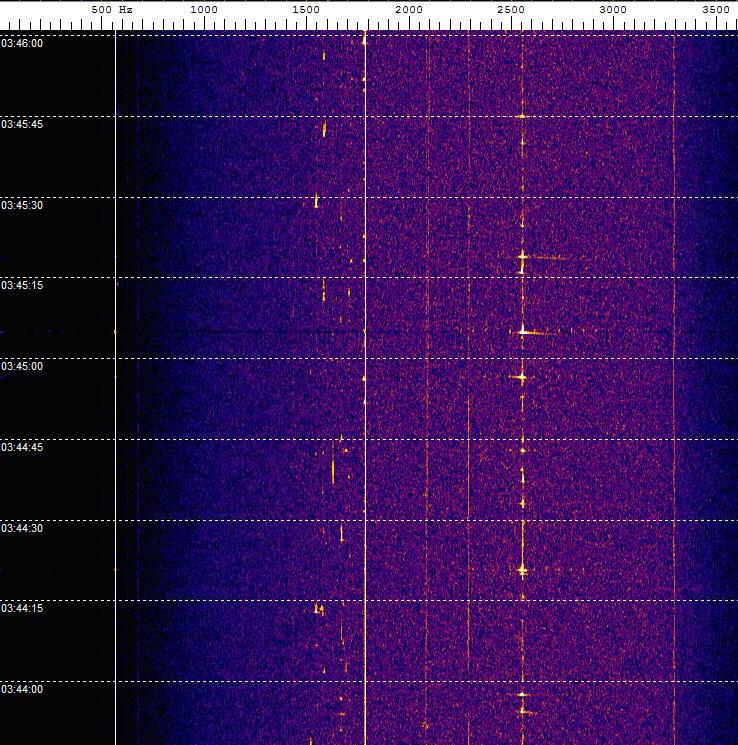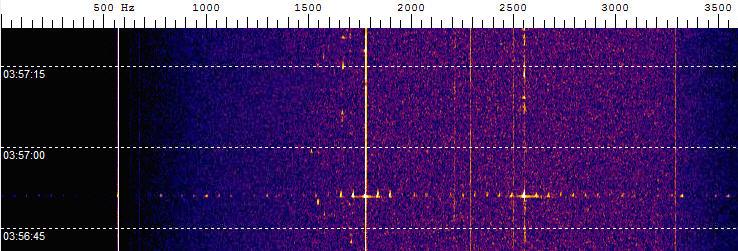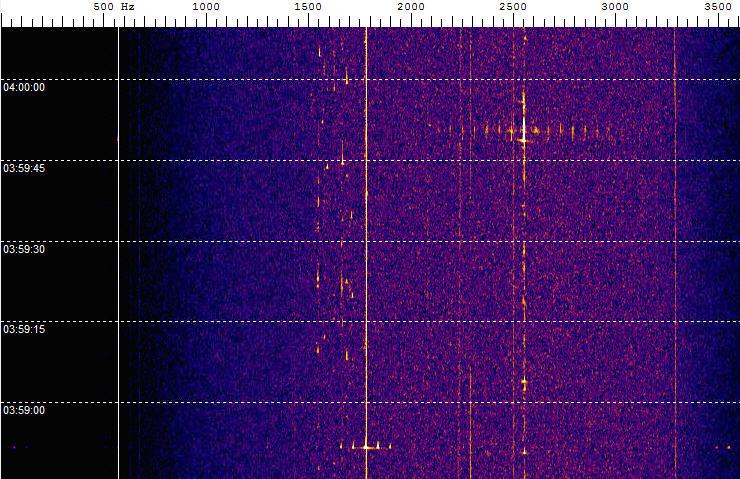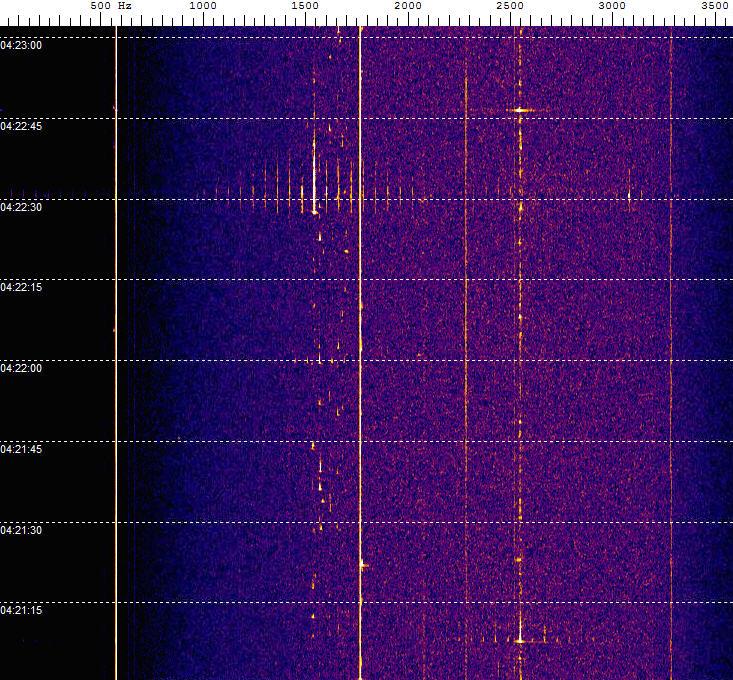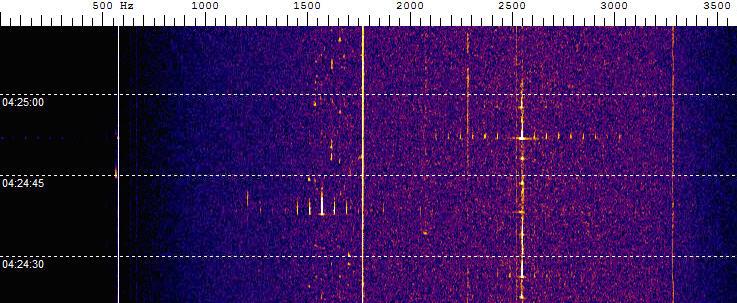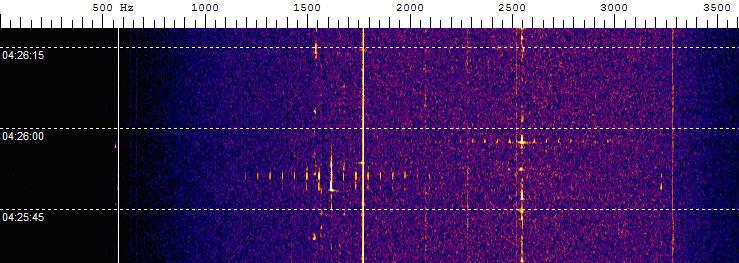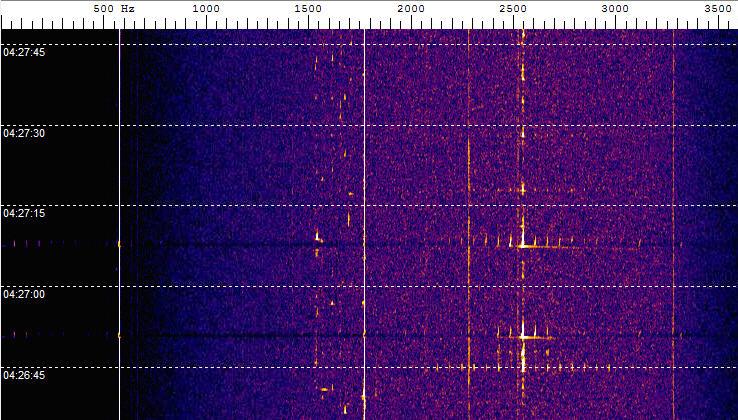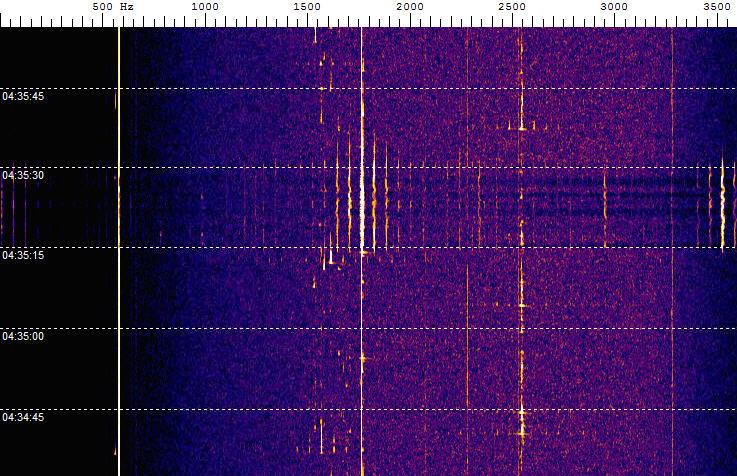I produced a narrated Introduction to Meteor Reflections Radio Astronomy presentation (22 MB video file) that will guide you through the setup and use of the equipment necessary to perform this part of the Radio Astronomy Observing Program. The script for the video narration can be found here. A PDF version of the PowerPoint presentation with Notes pages can be found here.
All observations were done August 24, 2015 UT. The exact time of the meteors can be found by the time on the left had side of each image, which is UT.
Description Observation UT time in on left hand side. 4 overdense and 1 underdense meteors at 2560 Hz and 1 overdense meteor at about 1640 Hz. UT time is on the left hand side. 3 overdense and 1 underdense meteors at 2560 Hz. UT time is on the left hand side. I very bright overdense meteor at 1550 Hz and several underdense meteors at 2560 Hz. UT time is on the left hand side. 1 bright overdense meteor and maybe 3 underdense meteors at 2560 Hz. UT time is on the left hand side. 3 overdense and 2 underdense metwors at 2560 Hz and 1 bright overdense meteor at 1550 Hz. UT time is on the left hand side. 4 overdense metwors at 2560 Hz. UT time is on the left hand side. 2 overdense and several underdense metwors at 2560 Hz. 1 underdense meteor at 1550 Hz, 1 at 1670 Hz and 1 at 1790 Hz. UT time is on the left hand side. 1 overdense with long tail at 2560 Hz. 1 overdense meteor at 1550 Hz. UT time is on the left hand side. 1 overdense meteor at 1550 Hz, 1 overdense meteor at 1590 Hz and 7 overdense and a couple underdense meteors at 2560 Hz. UT time is on the left hand side. 2 overdense meteors at 2560 Hz. UT time is on the left hand side. 4 overdense meteors at 2560 Hz. One of them seen at 2070 Hz also. Maybe 1 overdense metwor at 1710 Hz. UT time is on the left hand side. 2 overdense and 1 underdense meteors at 2560 Hz. 1Overdense meteor at 1790 Hz. UT time is on the left hand side. 1 overdense meteor at 2560 Hz. 2 overdense meteors at 1790 Hz. UT time is on the left hand side. 1 nice Overdense meteor with long tail at 2560 Hz and 1 overdense meteor at 1590 Hz. UT time is on the left hand side. Lots of overdense and underdense meteors at 2560 Hz. UT time is on the left hand side. A nice overdense meteor seen at both 2560 Hz and 1790 Hz. Maybe a underdense at 2560 Hz. UT time is on the left hand side. A nice, bright overdense meteor at 2560 Hz with persistent tail. UT time is on the left hand side. 1 overdense meteor and 2 underdense meteors at 2560 Hz and 1 overdense meteor at 1790 Hz. UT time is on the left hand side. A nice, bright overdense meteor ar 1550 Hz and 2 nice overdense meteors and several underdense meteors at 2560 Hz. UT time is on the left hand side. Lots of overdense and underdense meteors at 2560 Hz and 1 overdense meteor at 1550 Hz. UT time is on the left hand side. 2 nice overdense meteors at 1550 and 2560 Hz. UT time is on the left hand side. 4 overdense and maybe 2 or 3 underdense meteors at 2560 Hz. The one at 4:26:45 had a nice tail tht persisted for 5 seconds. You can see the wind in the upper atmosphere effect this tail a bit. UT time is on the left hand side. Best meteor of the night. Long persistent tail and must have been very bright at 1760 Hz. 3 overdense meteors at 2560 Hz. In the reflections of the 1760 Hz meteor, you can see the effects of the upper wind on the tail. The main image of the meteor is too bright to show this.
